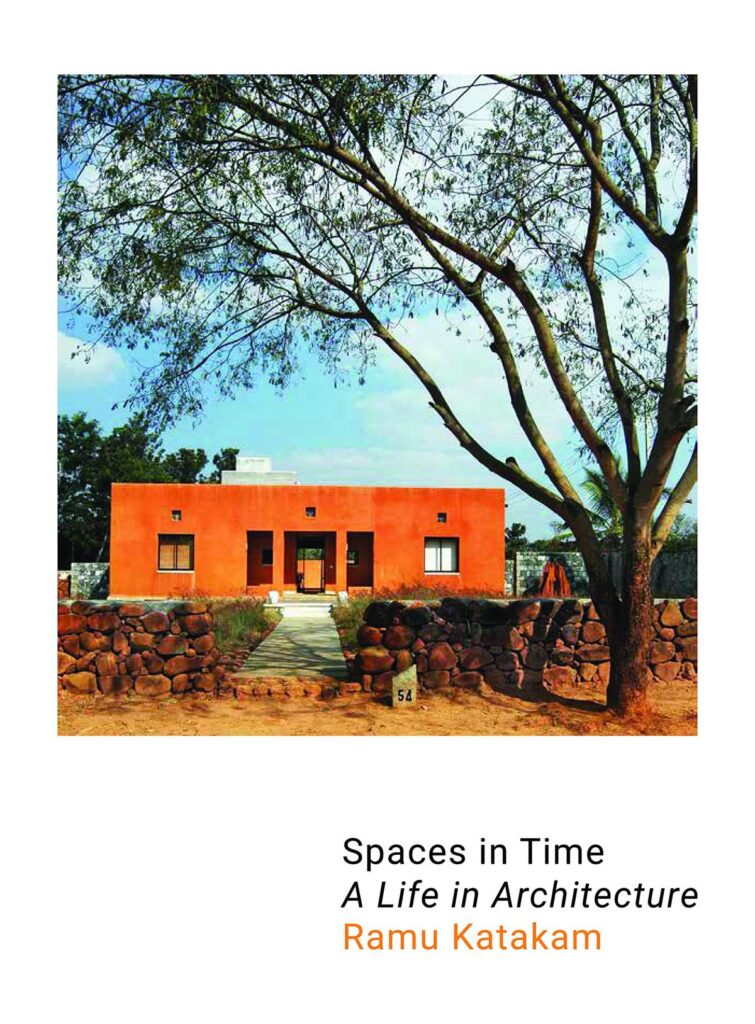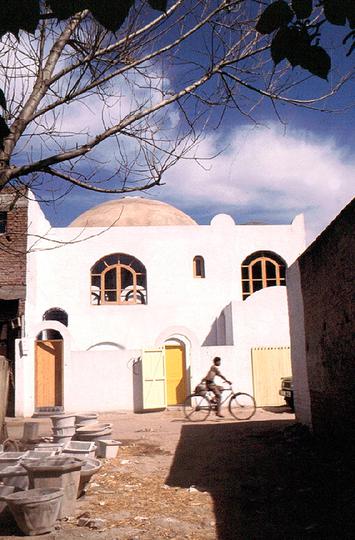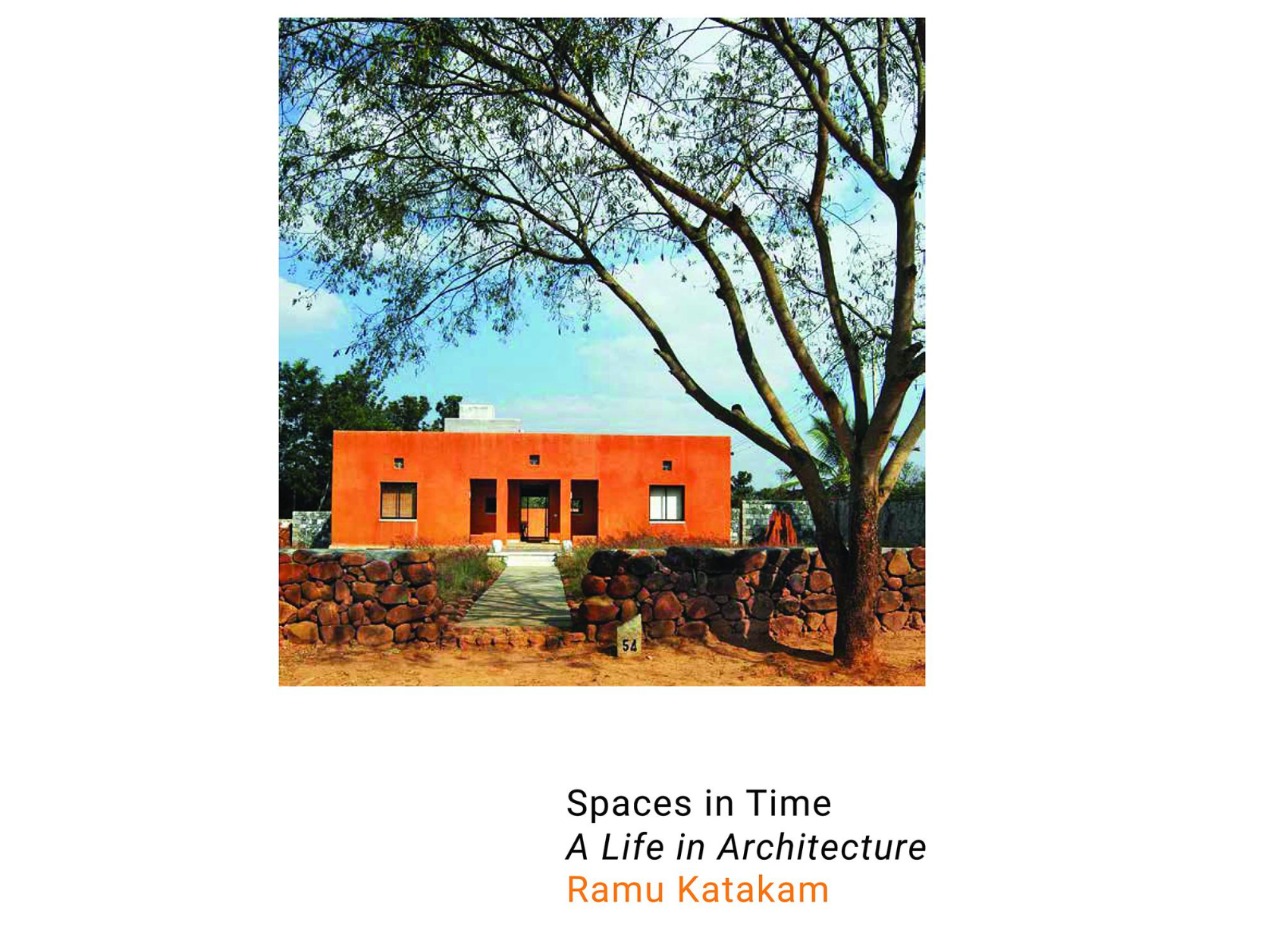The book, Spaces in Time, A Life in Architecture, also maps the changes in India’s architecture over the past 75 years.
Spaces in Time chronicles 70 years in the life of veteran architect Ramu Katakam. Katakam belongs to a generation of architects and artists who were born at the end of colonial rule (1940s) and whose experiences were shaped by the promises of a young democracy, which now completes 75 years.
Edited by Nayantara Patel and designed by Rukminee Guha Thakurta, the book conveys an inextricably linked synergy between Katakam’s life and work. In his foreword, Gautam Bhatia reveals the challenges of an architect’s memoir that is tasked with negotiating between private histories and the public nature of architecture.

An architect’s memoir
Such memoirs have a twofold purpose: as an architect looks back and reflects on his life, the oral histories he records fill a void in collective memory. The book offers narratives of architectural sites, both ancient and contemporary, in different regions of the world through the eyes of an avid architect-traveller and conjures the larger cultural context of a forgotten past.

Katakam, who began his architecture practice in 1977 and settled down in Goa in 2013, has been involved in heritage restoration with sustainable technologies. A member of the Royal Institute of British Architects and the Indian Institute of Architects, he has co-authored two books, Glimpses of Architecture in Kerala and Cosmic Dance in Stone.
Katakam’s formative years were spent in Madras in a home built by his grandmother in the 1930s. In his youth, flying planes and gliders over Mahabalipuram was a passion. He returned to the rock-cut precinct in 2014 to publish Cosmic Dance in Stone, along with Claire Arni, who photographed the ruins.
Joining Pembroke College, Cambridge University, to study architecture in 1966 was a turning point, providing Katakam a new sense of creative freedom. He records several anecdotes from his early career as an architect before he returned to New Delhi to set up a practice. The experience of constructing his own home, named “54”, which had an organic plan in a long plot, has insights for young aspiring architects as well as those keen to build their own homes. It opened into a flourishing garden at the rear, an invitation to large outdoor gatherings. Influenced by his mother, who was an accomplished artist in her own right, Katakam’s practice embodied an interest in the arts—painting, sculpture, and natural landscapes. Mid-career, he entered a phase of liberal thinking, designing hill retreats, artist centres, a church, and a large bungalow in close communion with nature.
The book revisits memorable meetings with architects who inspired Katakam, such as Charles Correa, Laurie Baker, Geoffrey Bawa, Cyrus Jhabwala, Sir Colin Alexander St John Wilson, Leslie Martin, Joseph Allen Stein, Louis Kahn, Barry Gasson, Habib Rahman, Richard Rogers, and Serban Cantacuzino, among others. While Katakam’s mother introduced him to the art of Impressionists in Paris and other modernists, the artist Himmat Shah introduced him to the works of Isamu Noguchi. Friendships with sculptor P.R. Daroz, Laxma Goud, K.S. Radhakrishnan, and Dhruv Mistry brought in new perspectives and experiences.

Katakam’s all-consuming passion for cars and motorcycles is evident in the vivid descriptions of his 1968 Mustang, Jaguar, Messerschmitt, Mini 62, Citroen 2 CV, Beetle, Chevrolet, Willys jeep, VW camper van, and an incredible array of motorcycles.
A long-time fascination for Kerala evolved into Glimpses of Architecture in Kerala, a book on its timber temples, with photographs by Joginder Singh. A meeting with Simon Velez, an architect building with natural materials, took Katakam to Colombia to study Velez’s fascinating bamboo buildings. Does this provide a context to critically review architectural education in India today, when conflicts of infrastructural development and environmental conservation grow louder in the context of climate change?

Gautam Bhatia suggests that Katakam’s later projects are more subdued: Axis Mundi, the burnt orange home built in Bangalore (and which is featured on the book’s cover) was shortlisted for the Aga Khan Award for Architecture in 2007. Another of Katakam’s projects was a Vipassana ashram on the banks of the Nagarjunakonda lake in Andhra Pradesh, built of earth blocks and domes with a large meditation hall and residential spaces for students. In later years, he was immersed in a range of interesting projects: a guest house in a tea garden, a Gandhian community, workshops and a space for weavers, several houses in close proximity with nature, and an art village, among others.
The last chapter reveals a retreat from frenetic city life to Goa and meetings with the Dalai Lama. It also records Katakam’s preoccupation with alternative cures, herbal and flower remedies, and the science of self-healing and dowsing.
Recalling Bernard Rudolfsky’s provocative book Architecture without Architects, the endnotes visit three meditative sanctuaries : a monastery at the Greek island of Amorgos, the mud structure of Tabo monastery in the Himalaya, and the cave dwellings of the Mesa Verde in Arizona. Katakam counts Venice, Jaisalmer, Barcelona, and Cambridge University as among those places that have inspired his long years of praxis.
Spaces in Time: A Life in Architecture is an insightful read. To those interested in the environment, oral histories, and architecture, it promises to evoke new imaginations with its generous record of pluralistic histories, immersed as it is in a free spirit of inquiry and reconciliation.
Artes-Roots Collaborative is a think tank of architects, environmentalists , and artists based near Vedanthangal, Tamil Nadu, and South Goa. Roots is engaged in research, advocacy, and community-participatory sustainable projects that explore ecological landscapes of the future, war refugees, and climate change.







